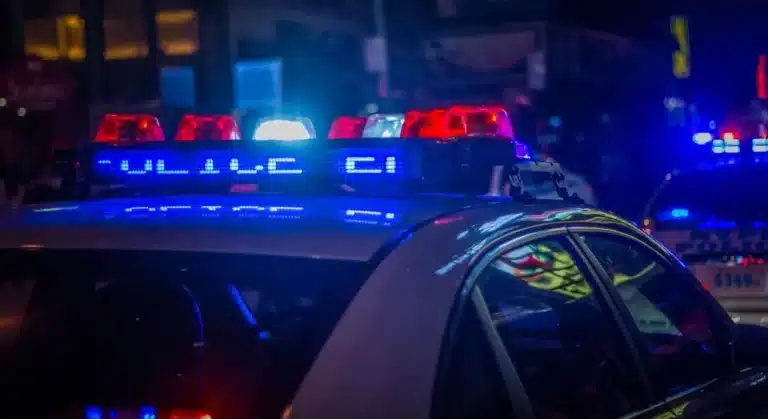Race, Mental Health And The Police – A Call For Mobile Crisis Teams
When the video of George Floyd’s murder became public, the nation began a renewed examination of systemic racism.
When the video of George Floyd’s murder became public, the nation began a renewed examination of systemic racism. The Center for Cognitive Therapy (CCTA) became active in the immediate aftermath, forming a Social Justice Committee (SJC) to reflect on the violence experienced by Black people in America, and exploring where we, as individuals, as clinicians and as a practice, could have an impact. The Advocacy Committee within the SJC began to explore ways to advance policies that could improve the lives of those in our own communities.
Personally, I began to reflect: what role I could have as an anti-racist psychologist? What role can my colleagues and our peers play in reform?
I began considering the benefits of implicit bias training in police departments to address undue violence against communities of color. I pivoted to consider an intersection of mental health and implicit bias. Police are untrained in de-escalation and unfamiliar with symptoms and presentation of severe mental health. Police are not only ill-equipped to handle mental health crises but have few dispositions other than arrest or transport to a mental health facility to use. Mental health crisis calls are more complex, take more time and are more volatile. More often than not, police escalate already agitated people with techniques that rely on force and attitudes primed for action when attunement to non-verbal communication or tone, prosody and cadence are called for. High emotion is a known trigger for psychosis for people with schizophrenia which, if handled differently, could result in different outcomes for many victims of police violence and their perpetrators.
While statistics vary on how many mental health calls police respond to, some estimate as high as 10 percent (Police Responses to People with Mental Illness by Duncan Chappell, 2013). Last year, 180,000 unique calls were made to 911 in New York City for “emotionally disturbed persons.” But 78 percent of NYPD officers haven’t received training on how to respond. Communities of color are disproportionately affected. Studies indicate that 1 in 4 people with severe mental illness are victims of police violence. Black people are sixteen times more likely to be killed by police. According to Fatal Force, the Washington Post state-by-state database of police homicides since 2015, every person shot by police in Virginia was Black and diagnosed with a mental illness.
In March 2019, the father of Osaze Osagie, a 29-year old, autistic Black man called 911 when he was concerned his son was suicidal. Police fatally shot Mr. Osagie. Similarly, Michelle Cusseaux, 50, was shot and killed by Officer Percy Dupra during a court-ordered visit to her home in Phoenix, Arizona. Her mother, Frances Garrett, a former activist in the Black Panthers established the Say Her Name campaign to bring attention to the Black Women victims of police violence. Both Cusseaux and Osagie were diagnosed with schizophrenia.
Some communities are turning to Crisis Intervention Teams (CIT) and co-responder teams to deal with mental health crisis calls. In Eugene, Oregon, CAHOOTS, a mobile crisis intervention team, drives a fleet of vans to respond to mental health crises. They offer free response for a broad range of non-criminal crises, including homelessness, intoxication, disorientation, substance abuse and mental illness problems, and dispute resolution. Non-emergency medical care, first aid, and transportation to services are also provided. Police are called upon if danger is present. Cities around the United States including Olympia, Denver and Oakland, are replicating CAHOOTS.
Like states across the country, Connecticut experienced a surge in teen suicide in the late 90’s. In the naughts, Connecticut rallied to meet their mental health crisis by providing grants to organizations who complied with strict training, reporting and assessment guidelines for mobile mental health teams. Today 14 such mobile crisis locations across the state are funded in part by the Department of Children and Families. During fiscal year 2018, 211 received 14,485 calls, 44 percent of which were for depression or youth who were at risk of self-harm. One such location is the Child Guidance Center of Southern Connecticut, where Dr. Larry Rosenberg, PhD. served as the Clinical Director, and where I completed my doctoral internship. For three months, I served on the Crisis Team rotation and was dispatched directly to home and school settings to assess a myriad of mental health issues, including suicidality, homicidal ideation, or other notable behavior that took the form of panic, acting out, or even catatonic withdrawal. On one occasion, I was dispatched to meet with a middle-schooler who had written a note on an assignment in which they articulated a wish to die. I met with the school counselor, assessed the child and determined the next steps. On another call, I went to an apartment to address a high schooler’s school refusal. On yet another, I met a suicidal teen in transitional living. Of dozens of calls, I was only inclined to call for back up from the police once. In every case, I was able to assess, de-escalate the child or adolescent and provide immediate, short term, acute intervention and/or referrals to mental health professionals in the area for longer term treatment.
Between July 2018 and June 2019, Virginia’s non-emergency phone line, 211, handled more than 150,000 calls. Of those, only 6% were health related and while not documented, it is likely that a fair percentage of those calls (pre-Covid-19) were mental health related. Fairfax County is currently the only county in the state with a mobile mental health unit.
More mobile crisis teams must be funded in the United States. Representative Leslie Herod of Denver, Colorado accompanied CAHOOTS on a drive along and witnessed first-hand the benefits of non-police intervention in mental health issues. Representative Rashida Tlaib of Detroit, Michigan is vocal about the need remove police from responding to mental health and for the federal government to establish and fund an emergency first responder corps.
I would like to see the state of Virginia expand its 211 remit beyond mobile crisis teams in Fairfax County in order to redirect mental health away from the police and, in doing so, protect Black Virginians. We, as Virginia mental health professionals, can mobilize our political resources and clinical knowledge to support all Virginians.”
Dr. Brooke Stroud, Psychology Associate






